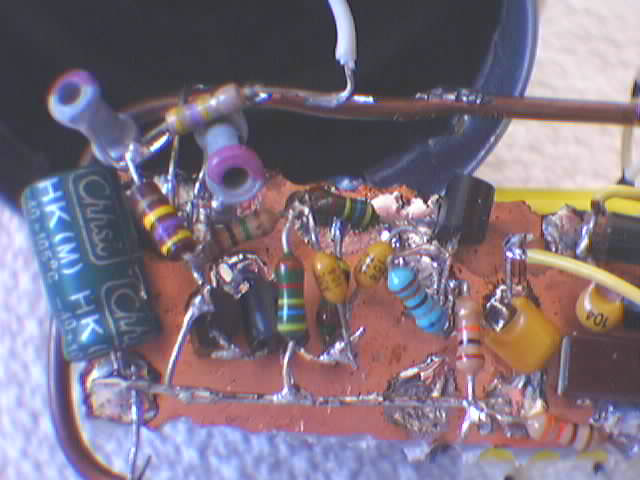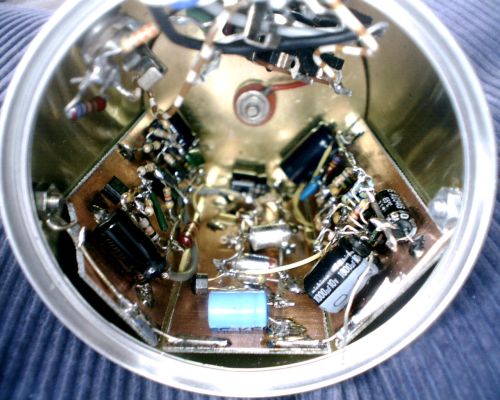Since it is important that we touch the receiver ground with our hands, as to
provide an electrical counterpoise to the antenna, the best thing would be
to place the receiver into a metal container.
Why bother about a special metal box? The aluminum can from beer or soft drinks
can be used to house the receiver and the 9 V battery. Its round shape fits
nicely in the hand.
First, one removes the top lid of the can with a suitable pair of scissors. Then
cut or drill a hole in its bottom to accept an insulated terminal for the antenna.
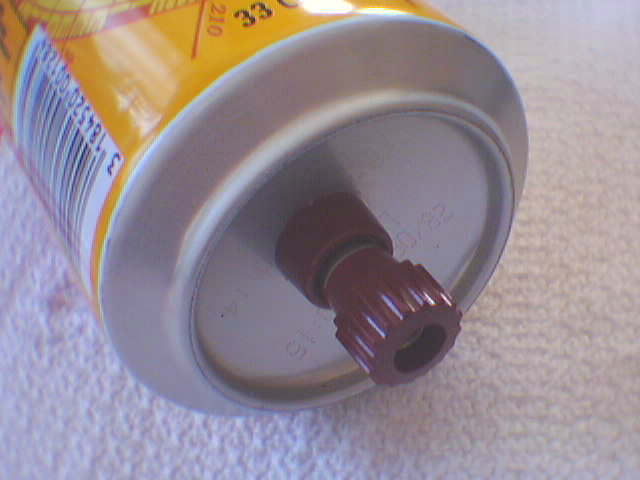 Prepare a round piece of circuit board to fit the opening at the top. This piece
will hold the volume control potientiometer, the power switch and the socket for
the ear phones. I soldered three M3 nuts to the board, so that three screws can fit
through three holes in the can's rim and hold the board to close the can's opening.
All these operations can a bit tricky to do it nicely.
Prepare a round piece of circuit board to fit the opening at the top. This piece
will hold the volume control potientiometer, the power switch and the socket for
the ear phones. I soldered three M3 nuts to the board, so that three screws can fit
through three holes in the can's rim and hold the board to close the can's opening.
All these operations can a bit tricky to do it nicely.
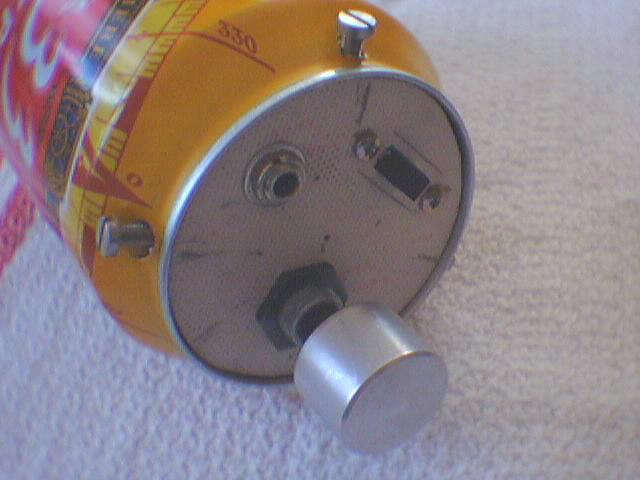 The receiver is built on a piece of circuit board or Veroboard, which is held
to the round board by a loop of thick copper wire.
The receiver is built on a piece of circuit board or Veroboard, which is held
to the round board by a loop of thick copper wire.
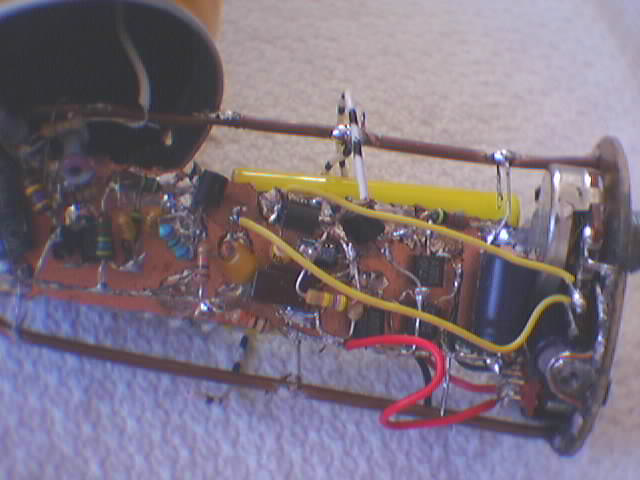 Here is a closeup view of the input section:
Here is a closeup view of the input section:
